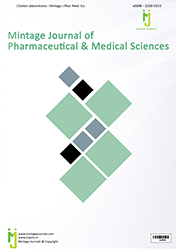Abstract
INHIBITION OF Acinetobacter baumannii ADHESION BY ANTI-FIMBRIAL ANTIBODY: THE FIMBRIAL ANTIGEN EFFECTIVENESS
Author(s): Hadeel K. Musafer*,Rajwa H. Essa
Objective:Collecting samples of Acinetobacter baumanniitaken from different clinical cases of wounds, septicemia, and urinary tract infections. That was accomplishedby taking (296) samples from Baghdad educational hospital and Ibn-al-Baladi hospital. Samples were cultured on solid media (McConkey and blood agars), and according to microscopical, cultural, and biochemical identification, in addition to using API 20-E system, (21) isolates of A. baumanniiwere identified and in percentage of 47.619, 9.523, 14.285, and 28.571 for wound, blood, sputum, and urine samples, respectively. Methods:detection of fimbriated bacterial isolates among 21 isolates, and all those isolated were fimbriae forming isolates; isolate number (9) was selected as an effective isolate in formation of fimbriae. Non-forming fimbriae isolate of Shigella flexneri is used as negative control. Results and Conclusion:the average of adherence of fimbriated bacterial cell with human epithelial cells was reached (50) adherent bacterial cell per epithelial cell compared with the average of adherence of control isolate (12) adherent bacterial cell per epithelial cell, the inhibition processes are performed: Inhibition of bacterial adherence by specific antibodies of fimbriae antigen showed inhibition effect of adherence in respect to fimbriatedisolate A. baumannii9 also the subminimum inhibitory concentration for four antibiotics (Gentamicin, Tobramycin, Cefepime, and Amikacin) inhibit the adherence of fimbriated isolate. The isolates (used in the study) have the ability to agglutinate Saccharomyces cerevisiae and human red blood corpuscles (RBCs). The study of effect of different fimbriae extract concentrations (25, 50, 100 μg/ml) on immune cells; consequently, reached to the following results: Concentrations of (25, 50, 100) μg/ml showed a negative effect on lymphocyte and PMNs viability which increased significantly (P≤0.05) with increasing of fimbriae extract concentration. On the other hand, concentrations of (25, 50) μg/ml of fimbriae extract caused a significant increase (P≤0.05) noticed in the average of T-cells forming the active T-Rosette (41.3, 54.3)% and the total (62, 81)% compared with control which reached (28.3, 40.6)% respectively. The present study results revealed an increase in phagocytosis of killed yeast cells by phagocytes. To our knowledge this is the first preliminary report in Iraq showed the role of fimbriated A. baumanniiin adherence on epithelial cell and inhibition of this adhesion by specific antibody, also this report investigated the role of fimbrial antigen on some immune cell.

ISSN: 2320-3315
ICV :81.58

